

Our five kids have traveled over 30 international flights around the world. Our longest flight was from Auckland to Los Angeles for 14 hours; we understand jet lag well. What’s the best way to deal with it? How can you minimize the adverse side effects of your vacation?
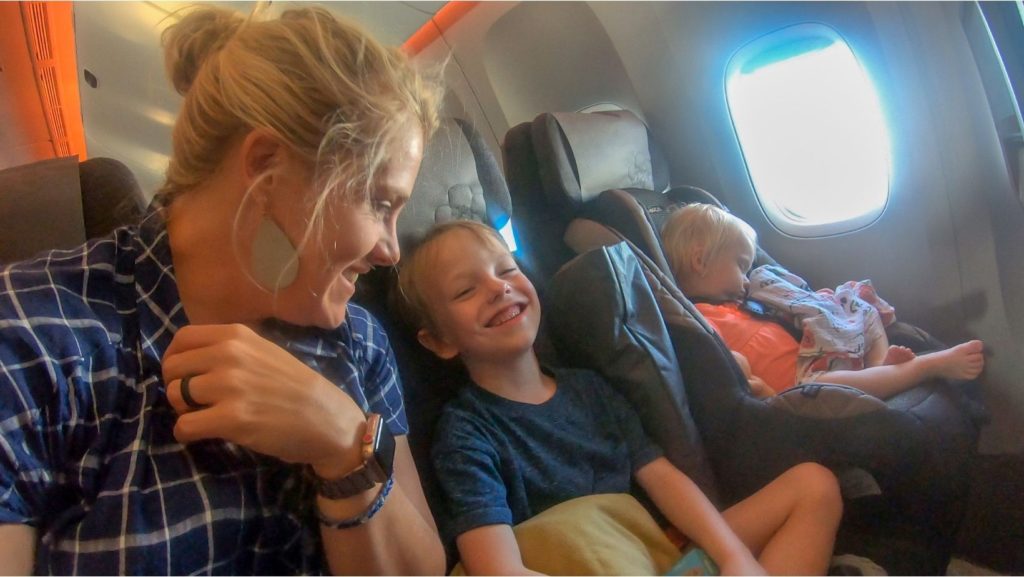
*Disclaimer: This post may contain affiliate links. Opinions shared are my own, and I only endorse products I support. By clicking on any of the links below, I may get a small commission if you purchase at absolutely no additional charge to you. I appreciate your support.*
Jet lag might leave you crummy, but it may also allow you to get a few early mornings or explore later for the first day or two while little bodies adjust. We try to use this to our advantage and enjoy adjusting to a new time zone.
I’ll share what we’ve found to be a successful and best way to adjust quickly.
Our bodies work in cycles and rhythms, many of which are dictated by the light of day and the food we eat. When we move our bodies at hundreds of miles an hour to a new place by plane, our bodies are in shock. Our sleep cycles are abnormal and normal systems are interrupted.
This sleep disruption is temporary until our bodies adjust to the new time zone and the cycles of that location. Jet lag occurs when you change more than two time zones.
Jet lag can be present in headaches, insomnia, or fatigue.
Sleeping on a plane is never fun (except maybe for those lucky folks in first class) and can be impossible. Our oldest daughter experiences great anxiety about sleeping on a plane and rarely does.
Anxiety can be your worst enemy when sleeping on a plane. If you are too nervous or full of anxiety, skip sleeping. Your body may take over at some point, and you’ll pass out into sleep. However, no amount of eye masks, earplugs, sleep aids, or pillows will get you to sleep if you are anxious (trust me, I’ve tried).
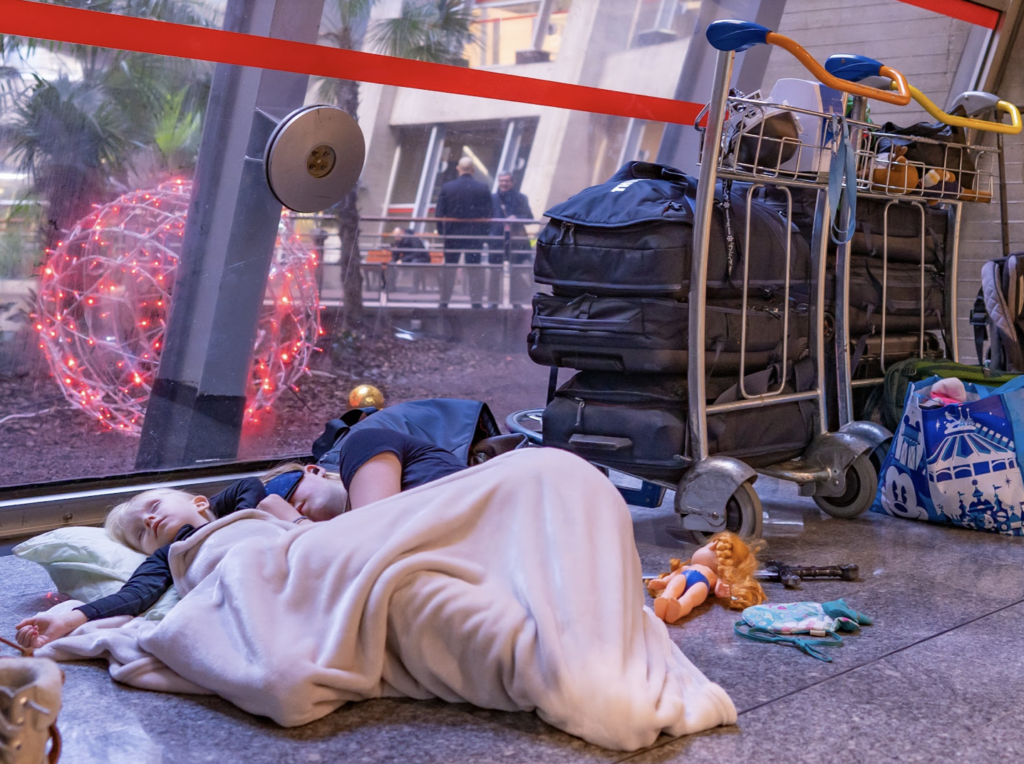
Only over many, many international flights have I been able to get some sleep on flights. I was so nervous and kept stressing about how tired I would be that I could never sleep.
Let me tell you a secret: you don’t have to sleep. Enjoy your movies, books, music, or whatever brings you joy on planes. I love the free movies on long flights and tend to catch up on new releases as we rarely watch anything at home. I also love writing for my blog while on planes, which helps me relax and enjoy the many hours soaring through the sky.
We rarely force our children to sleep on planes at all. Their bodies will tell them when they are tired. We take screens away if they ignore their body’s exhaustion cues (think red, tired eyes, and dark circles while staring at their screen). Within minutes, they usually put themselves to sleep.
If they only sleep 3-4 hours, that’s OK. You know they are tired, but it’s not worth the stress to you or them to force them to sleep.
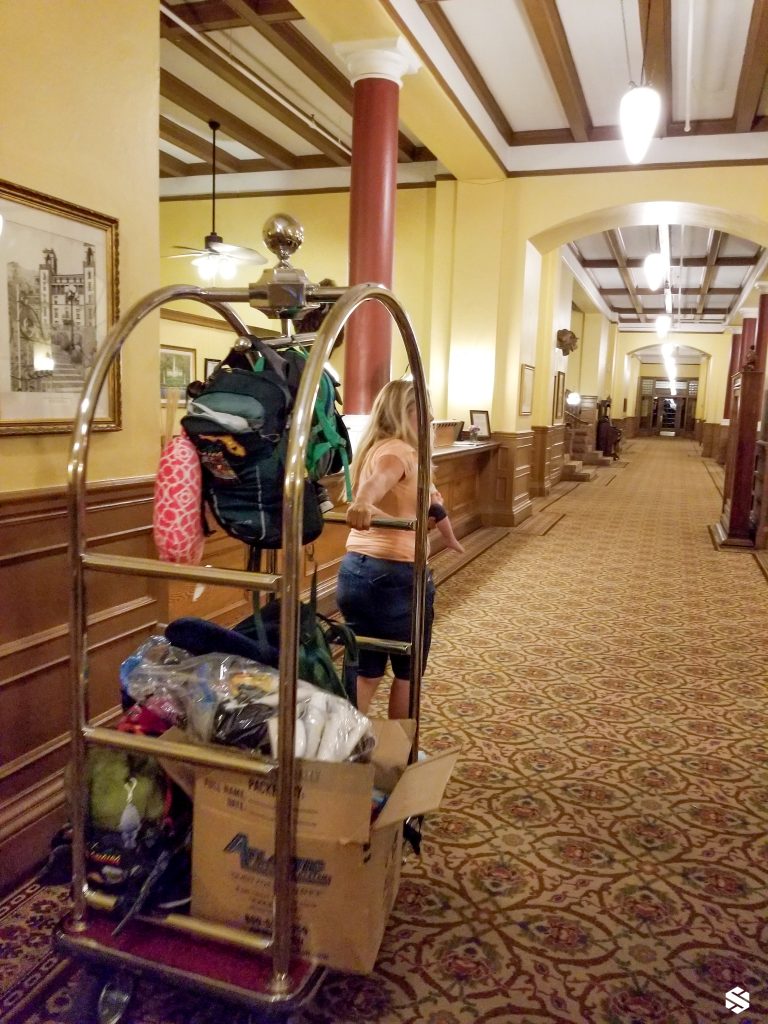
While we love many travel essentials for flying, especially our inflatable pillows and Seat To Sleep pillows for kids, sleeping on a plane is about more than good products.
As I mentioned above, trying to relax is most important. Having little or no expectations of sleeping on the plane and any sleep that happens will be a bonus. If you are caring for a baby or a toddler, it’s best to expect no sleep. Don’t worry; you can catch up in the following nights.
When we book our tickets, we try to leave the middle seats open in the chance we can have an extra seat. If the center seat is filled, we ask that person to switch to the window or aisle, which they are always happy to do. If you get an extra seat, this will help kids lay down and sleep a bit more.
We love Melatonin and are not afraid to dole it out to the kids. If we want them to sleep and they are exhausted, I give them 2-4 gm, depending on the child’s size, and soon send them a warning that screens go off in 15 minutes. It takes about 15-20 minutes for the Melatonin to kick in, and once we turn off the screen, it’s typically a quick dose into dreamland.

Don’t be afraid of the floor for kids to sleep on. It’s a little gross, and some airlines frown on it, but we often stick at least one kid on the floor to sleep for a long flight. They are tiny and can find it restful. Use a travel blanket like this one or the blankets provided on international flights to make a small bed.
Realize that our bodies have different kinds of sleep. The first 20-90 minutes of sleep are for quick recovery. It is not a restful sleep and is not enough to sustain you for long, but a short nap can reset your brain, mood, and energy. If you take a quick nap on the flight and can’t get back to sleep, that’s OK. Wait for your body to ease you back into sleep when it’s ready.
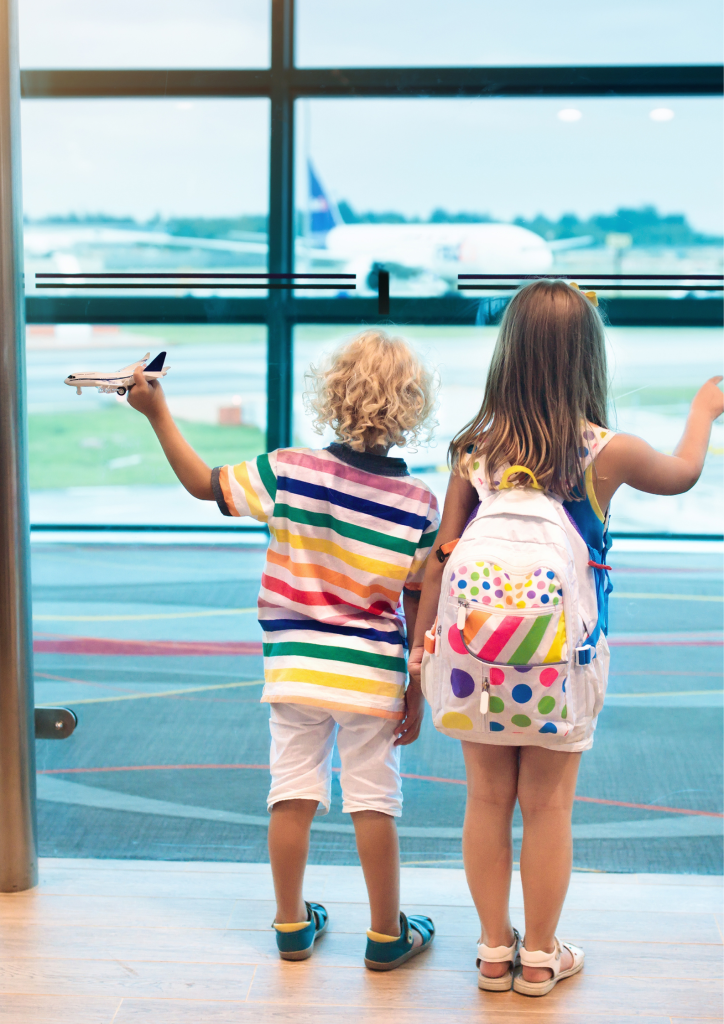
The direction around the globe makes a big difference. If you are headed west, like from Europe to the US, you will arrive the same day and be able to go to sleep when you arrive. It is the easiest route for jet lag. You’ll typically feel the effects of jet lag for 2-3 days.
If you are going east, like from the US to Europe, you’ll be spending your “night” on a plane. You might arrive at 3-4 am in the time zone you left, but it’s now morning at your destination. As difficult as it is, you’ll need to stay awake until a reasonable bedtime (at least 6 pm), so try to get some sleep on the plane. Even 3-4 hours can help. You’ll feel the effects of this jet lag up to 6-9 days after arrival. Yes, you might not even adjust completely before heading home.
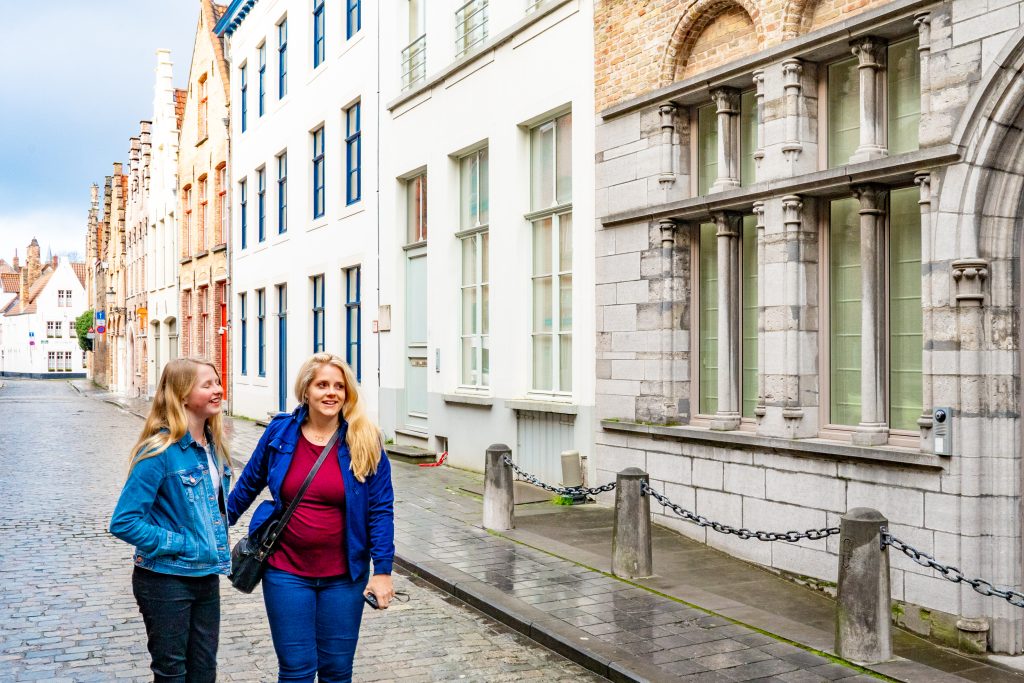
If you are going north or south, you are likely staying in your same time zone or within a couple of hours. In this case, treat plane time like you would off the plane. If it’s night, sleep, and if it’s the day, stay awake.
If your international flight leaves early in the morning, you will likely go to the airport in the middle of the night. Kids find this exciting and can seem full of energy while struggling to stay awake. Typically, you’ve been up much later doing all the last-minute packing and maybe didn’t even sleep.
We let the kids enjoy the excitement of getting to the plane and try to get them some food (everything is better with a full stomach). Once the plane takes off, we tell them they cannot have screen time until they’ve taken a nap (if we want them to sleep).
Usually, we will all doze off the first 2-3 hours of the early flight and then stay awake until we reach our destination. We all feel fine, can get food, and then have to get to an earlier bedtime before we crash hard.
You’ll probably wake up early, maybe even 4-5 am, but we use this to enjoy more of the day! You’ll adjust quickly.

Flights from the US to Europe are common for us (read about our experience moving to Portugal from the US) and tend to be tricky. You are always flying overnight, or a red-eye flight as they are called, and will need to stay awake when you arrive.
For these trips, meals are served in the first 2 hours of the flight, and we let the kids stay awake for this. Sleep is very disruptive when the flight attendants are all over, giving out food.
Once the meals are cleared away, I pass out Melatonin (if the kids seem really wired), give them a 15-minute warning that screens are going off and it’s going to be sleep time, and then help them settle. Our kids can sleep as much as 6-9 hours on these flights (toddlers sleep much longer, especially when we use this fantastic inflatable pillow as a bed). When they wake up, and it’s been a minimum of 5 hours, we let them have screen time again.
If they wake up after 2 hours, let’s say, and you want at least 5, be firm that they need to go back to sleep. You don’t care if they stare at the ceiling first for 40 minutes. Stay strong and encourage them to go back to sleep. Don’t give them screen time.

Once you’ve arrived and are dealing with jet lag, what’s the best way to handle this with your kids? Here are my 10 tips:
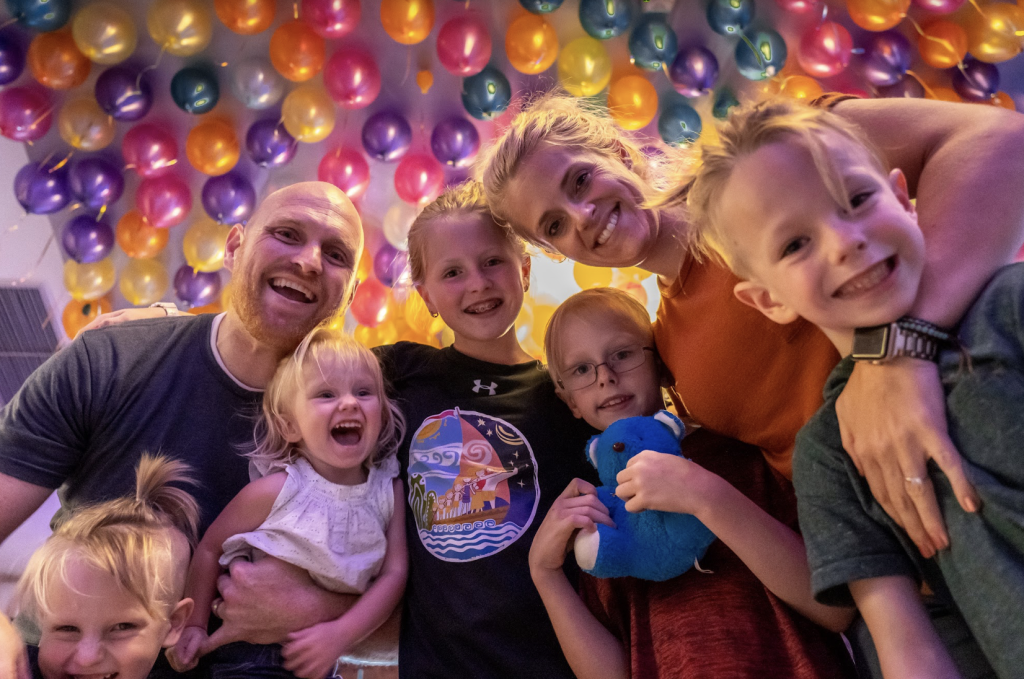
Have a safe flight! ✈️
Leslie
✈️ Book your first international flight on Booking.com, Skyscanner, Kiwi.com, or Expedia
Find a nice hotel on Booking.com, Expedia, or Vrbo, (we also love Tripadvisor and Hotels.com)
Discover exciting activities around the world from GetYourGuide, Airbnb Experiences, or Viator
Rent a Car on Expedia Rental Cars
✅ Get insured while traveling with World Nomads
Capture your memories as we do with a GroPro, Sony camera, or our favorite drones: DJI FPV, Air, and Mini
Check out your travel necessities from a comprehensive list of all the 7Wayfinders Travel Must-Haves. Click Here!


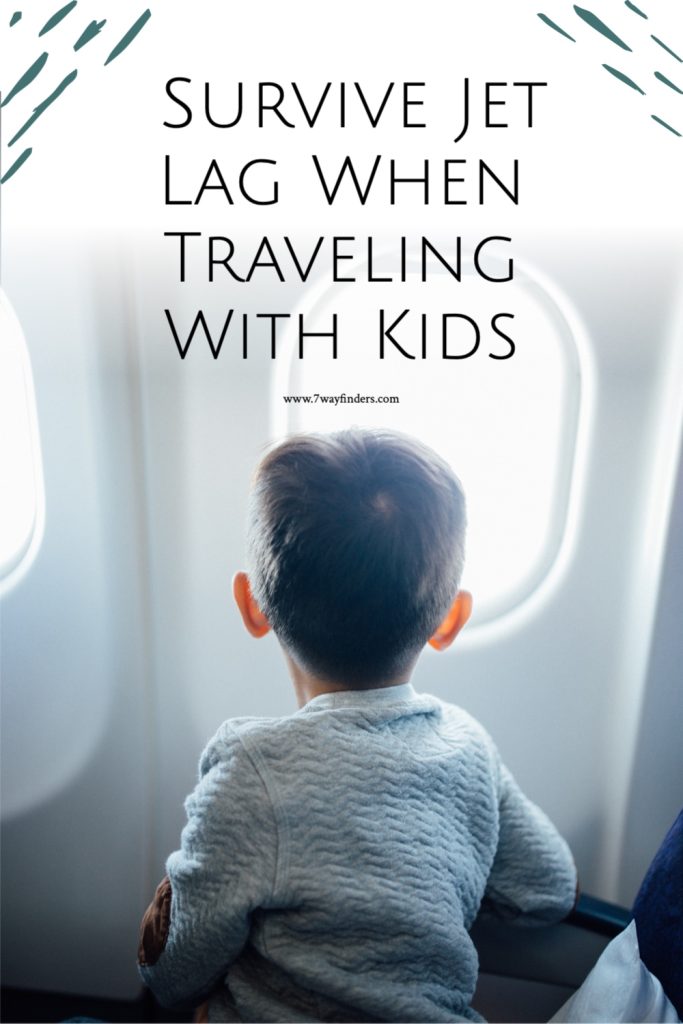
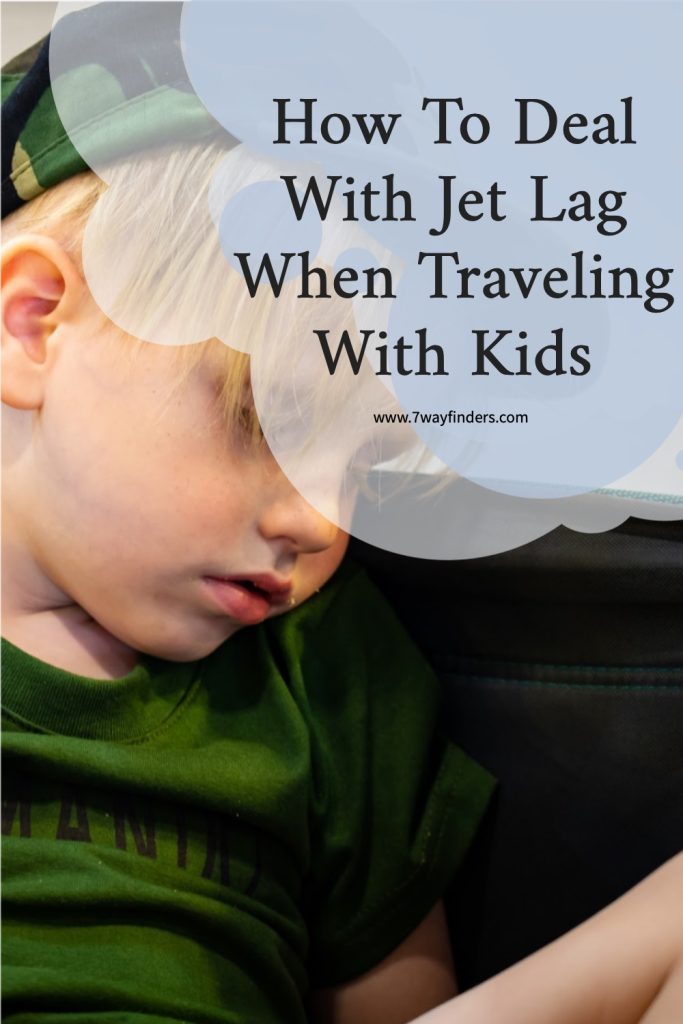
30 Must-Have Tips for Flying With a Toddler
30 Family Travel Items You Need Before Your Next Trip!

20 Comments